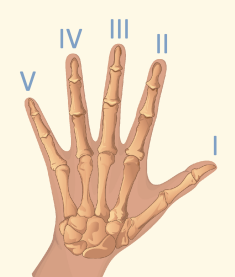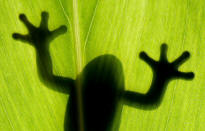Glossary

Digit
The distal parts of a limb, such as fingers or toes.
These are named and identified by Roman numerals.
In a pentadactyl (five-fingered or five-toed) arrangement, the most medial digit, if present, is I (e.g. the human thumb) and the most lateral is V (e.g. the human little finger).
These are named and identified by Roman numerals.
In a pentadactyl (five-fingered or five-toed) arrangement, the most medial digit, if present, is I (e.g. the human thumb) and the most lateral is V (e.g. the human little finger).
Limb
An appendage to the main body of an organism.
For example, an arm, leg, flipper or wing.
The limbs of quadrupeds, such as dogs and cats, are legs.
For example, an arm, leg, flipper or wing.
The limbs of quadrupeds, such as dogs and cats, are legs.
Dactyly
The number and arrangement of digits (fingers, toes) on a limb.


Tetradactyl
Having four digits (fingers, toes) on a limb.
Many amphibians and birds are tetradactyl.

Many amphibians and birds are tetradactyl.

Tridactyl
Having three digits (fingers, toes) on a limb.
e.g. rhinoceros, hipparion (ancestor of the modern horse), and emu.

e.g. rhinoceros, hipparion (ancestor of the modern horse), and emu.

Didactyl
Having two digits (fingers, toes) on a limb.
e.g. two-toed sloth, cattle, sheep and deer.

e.g. two-toed sloth, cattle, sheep and deer.

Monodactyl
Having one digit (finger or toe) on a limb.
e.g. horse

e.g. horse

Title8
text
Title9
text





